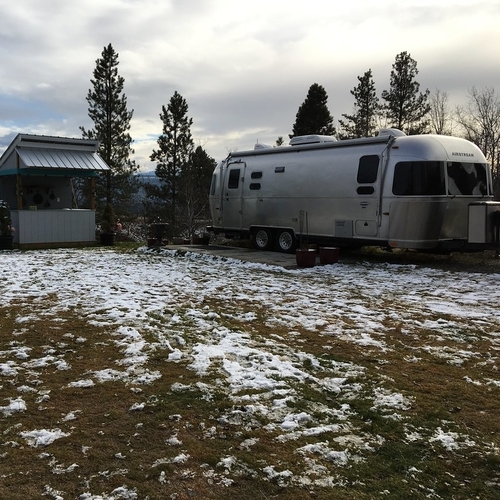RV Power Inverters
RVwest’s RV tech, Reg De Young, walks us through power conversion
Your RV will usually have a 110-volt AC converter installed as standard equipment. When connected to shore power, this device will convert the 110-volt AC power to 12-volt DC power to supply the fuse panel and its multiple circuits. In addition, the batteries will be kept at full charge.
An inverter basically does the reverse, namely, it changes 12-volt DC power to 110-volt AC to power up appliances like TV’s, DVD players, satellite receivers,etc. If you wish to use higher wattage appliances like microwaves, coffee makers and toasters, a higher wattage inverter will be more suitable. In regards to wattage you can purchase a few different sizes—from a small portable 300-watt unit, right up to a 3,000-watt solid mounted unit.
Many of these high-wattage units will have a built-in battery charger to provide a high rate of charge when plugged into shore power.
Most folks we see at our shop will go with a 1,750-watt inverter and have a transfer switch used in conjunction with the package. This switch provides a separation of the incoming power supply like shore power, a generator or the inverter. The converter will only function when the shore power is available.
The inverter can be switched on manually or you can have a remote switch installed up to 25 feet from the inverter unit.
The cables used to hook the system to the batteries consist of a large gauge similar to what is used for welding cable, and will have a high amp fuse located near the inverter. It must be noted that the cables should not be more than 10 feet long. Remember, black is negative and red is positive.
A very important factor when purchasing an inverter is the wave form output. There are generally two types of wave forms which are either true-sine wave or modified-sine wave.
The true-sine wave output produces power which is very similar to the power from the grid system supplying our homes and businesses.
These units are very beneficial when powering sensitive electronics like some high end stereos, plasma TV’s, oxygen concentrators or equipment with variable speed motors.
The modified sine-wave inverters are quite common and the power produced is sufficient for most applications. The wave form is slightly different from a grid system but with most all things, you get what you pay for.
Determining what you need
To determine the size of inverter in wattage to suit your needs, you must first determine the continuous power ratings in watts of the appliances you intend to operate. Usually one at a time is best and select the appliance with the highest wattage draw to determine the unit accordingly.
There is another rating to consider and it is called surge power. This is the additional wattage required to start some appliances, especially in the case where electric motors are involved.
One of the most satisfying aspects of an inverter is the continuous noise free power available and the freedom to be able to watch a movie or surf the internet when dry camping. If you add a solar panel package you can greatly enhance or increase battery power available.
On a final note always switch your fridge to gas only when the inverter is on. We see this problem every season and it can be very frustrating to the RV owner who doesn’t understand why his batteries are going dead so rapidly.



